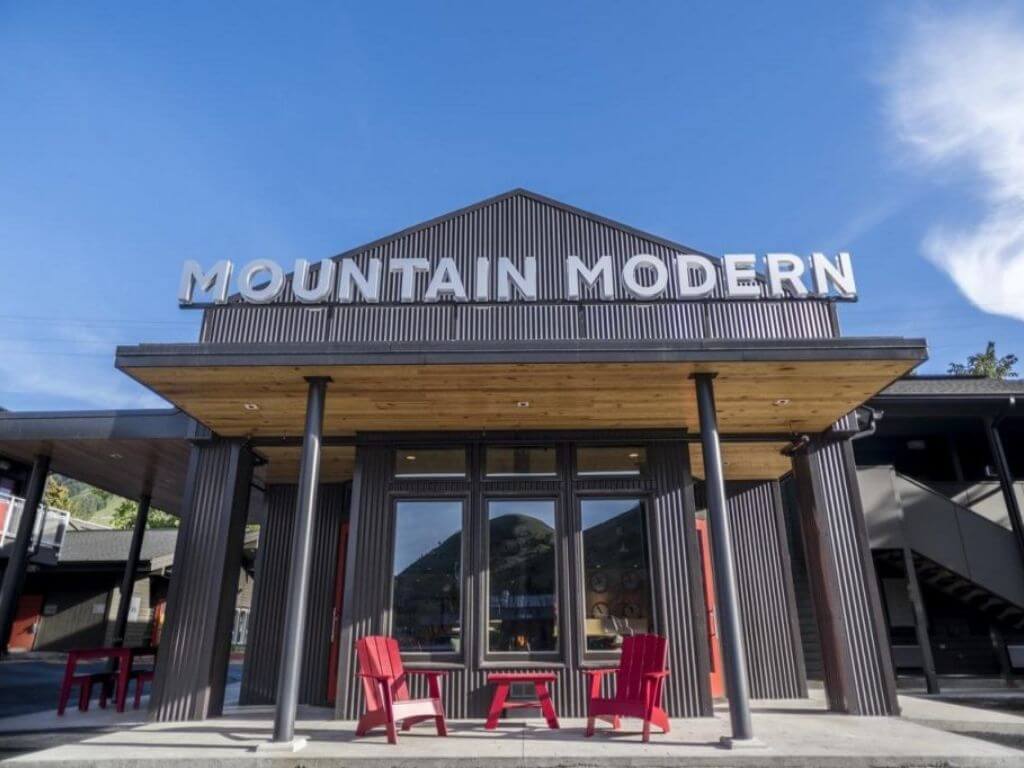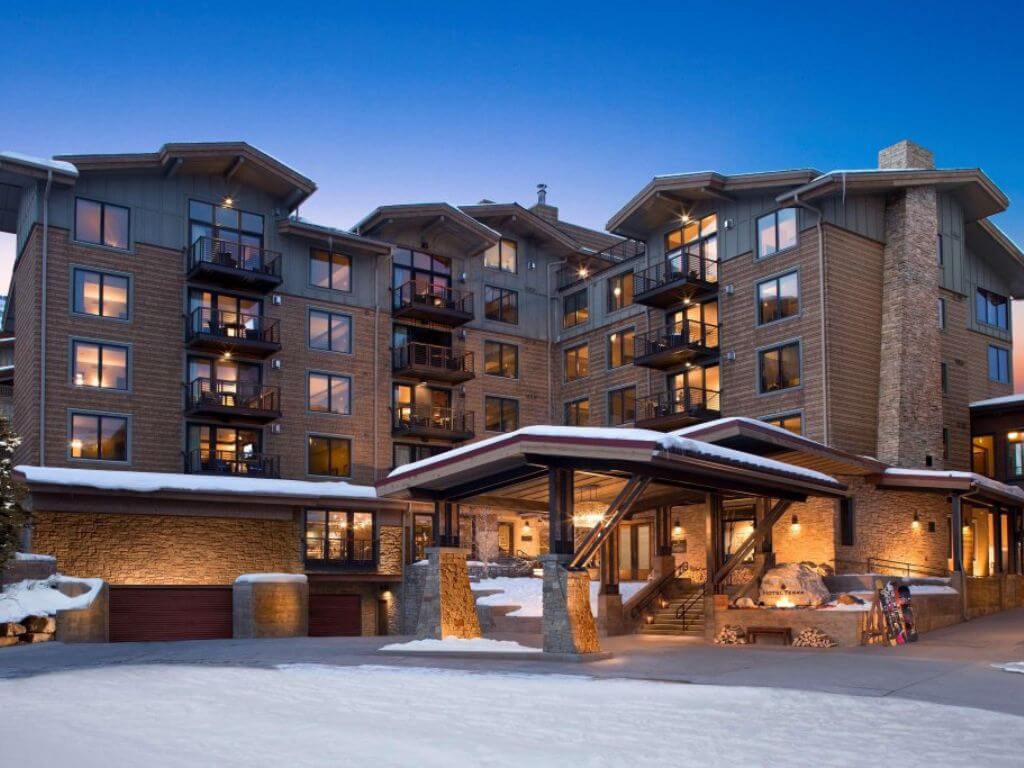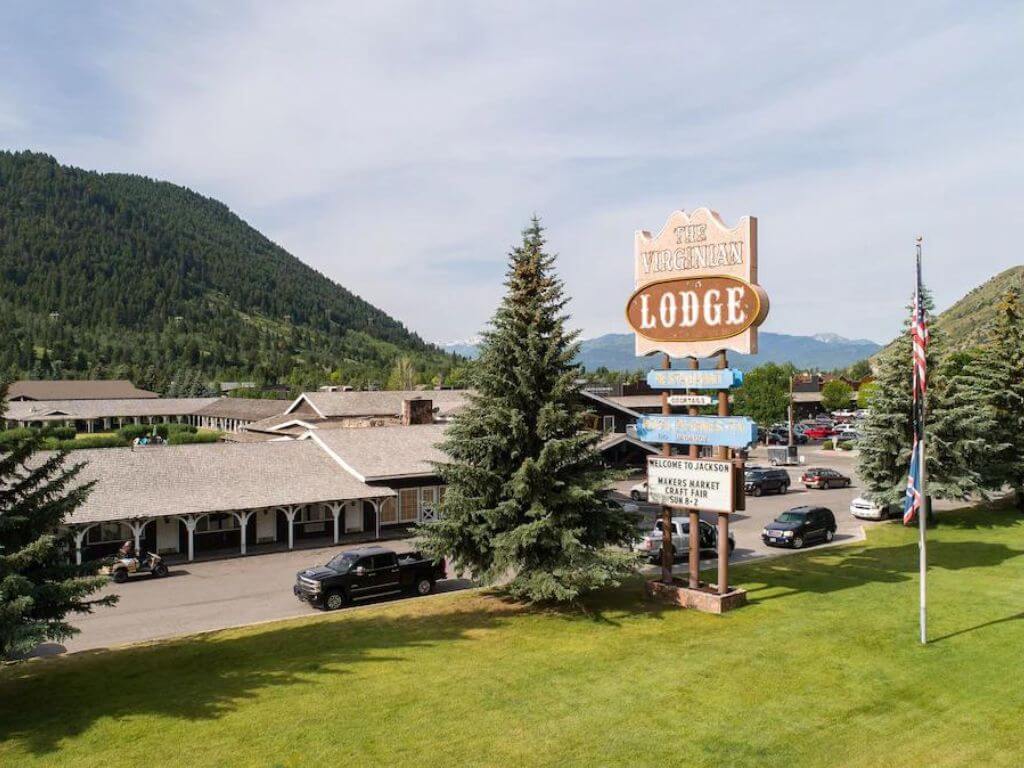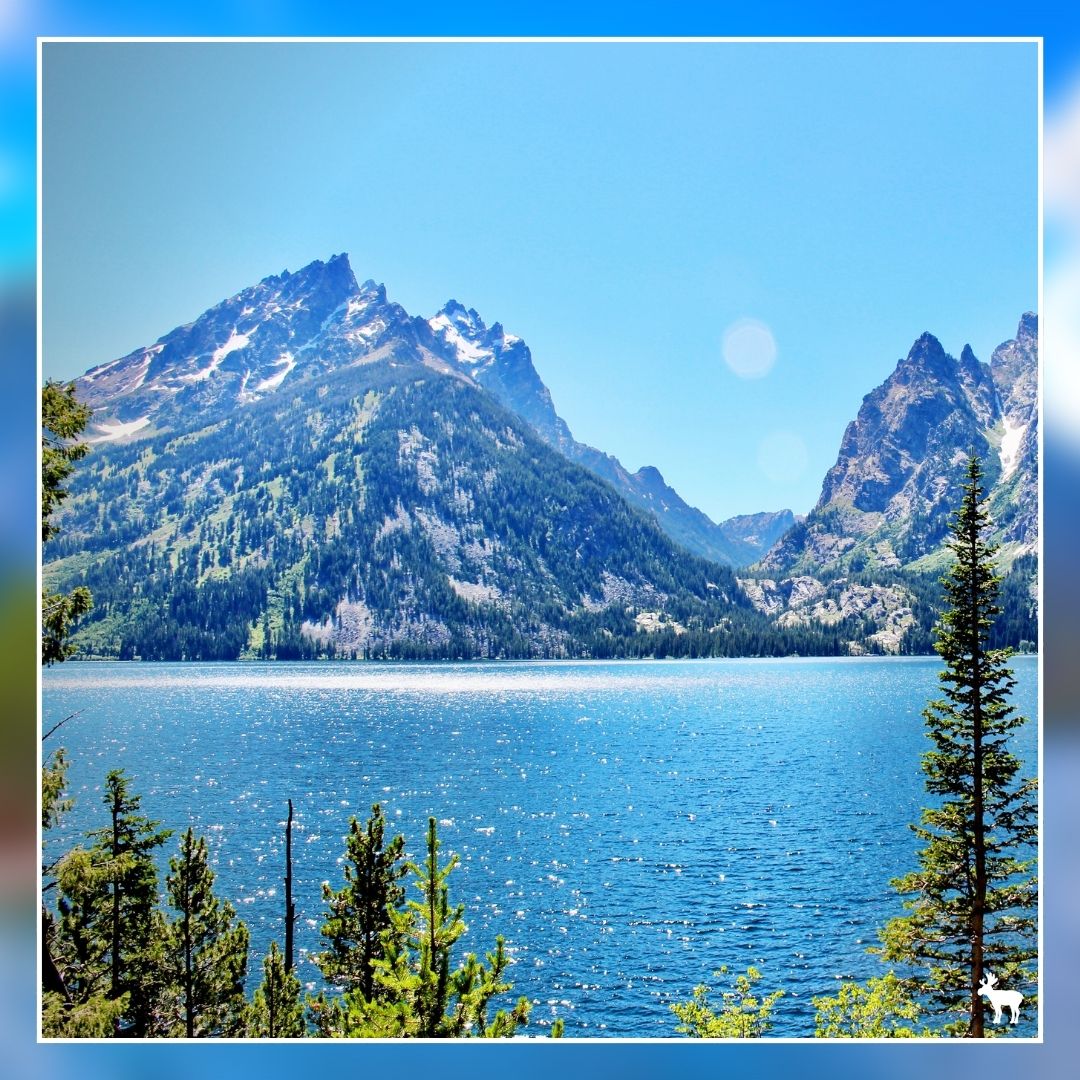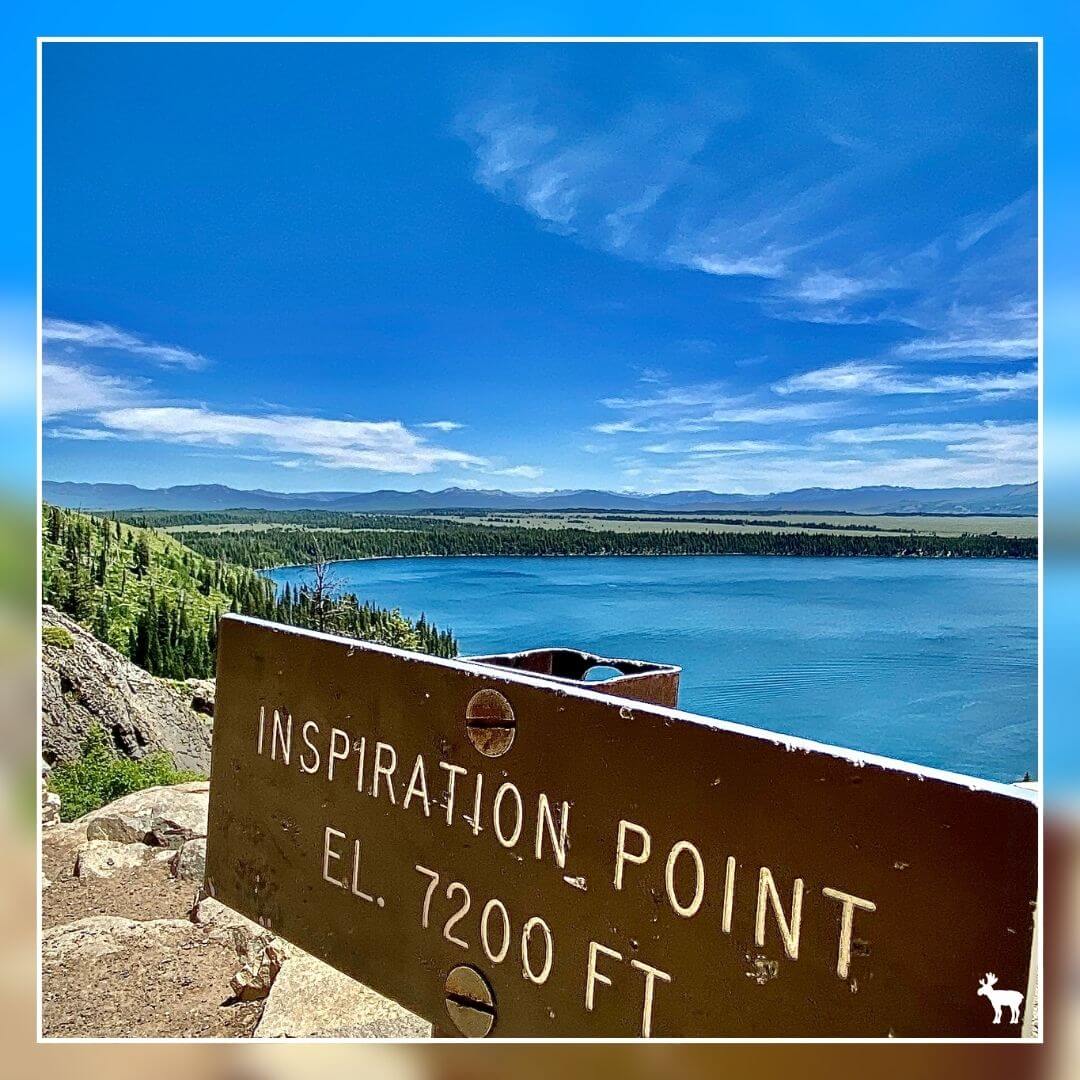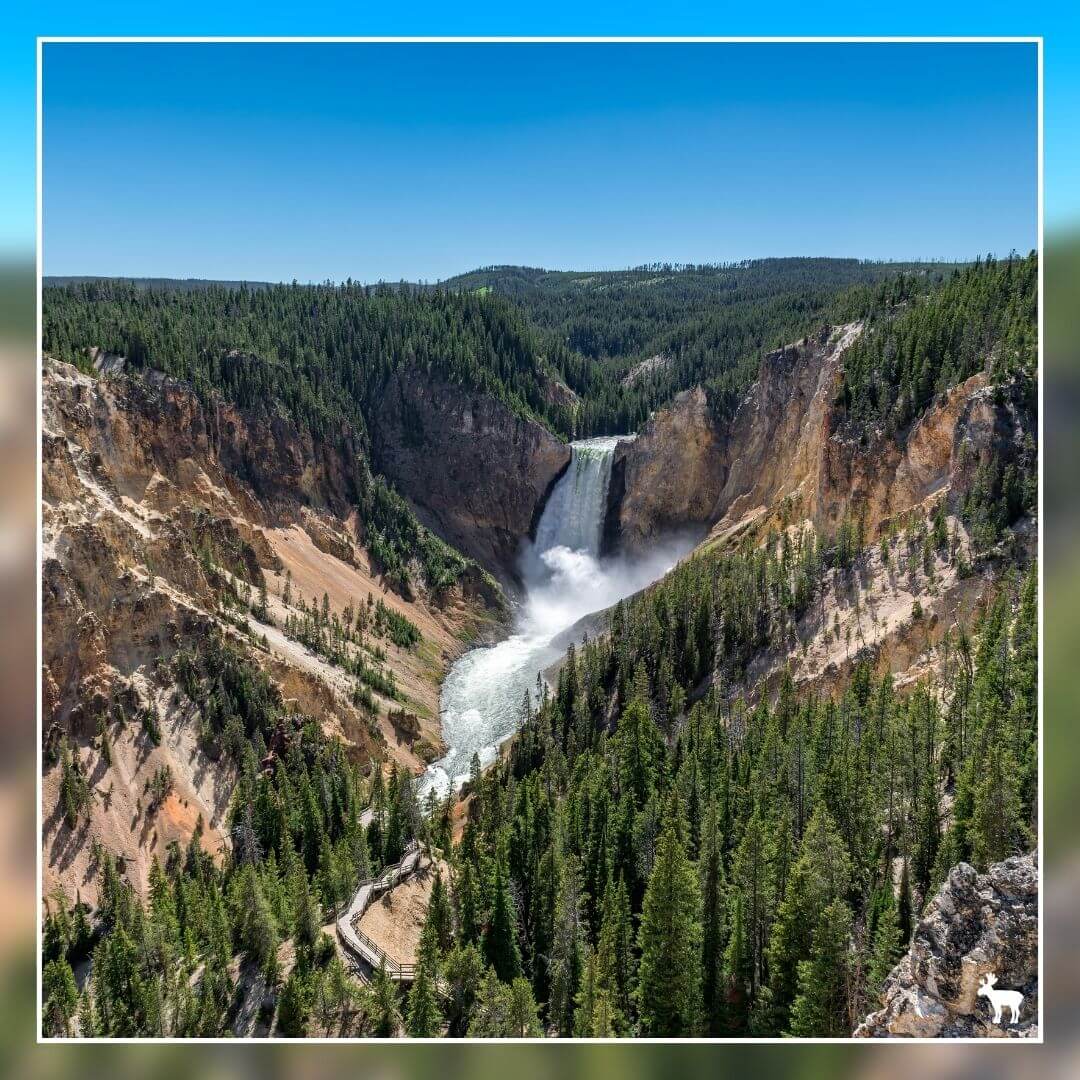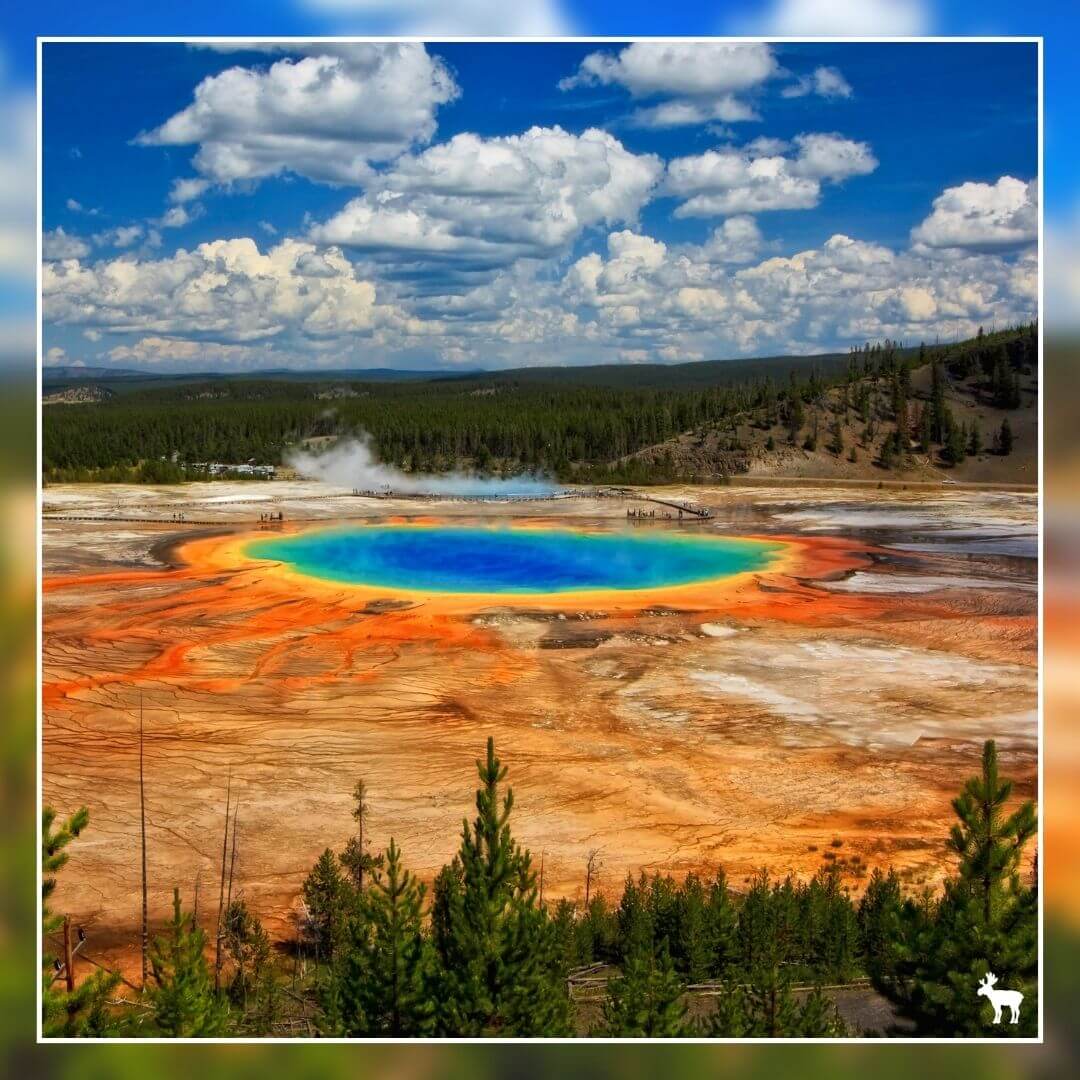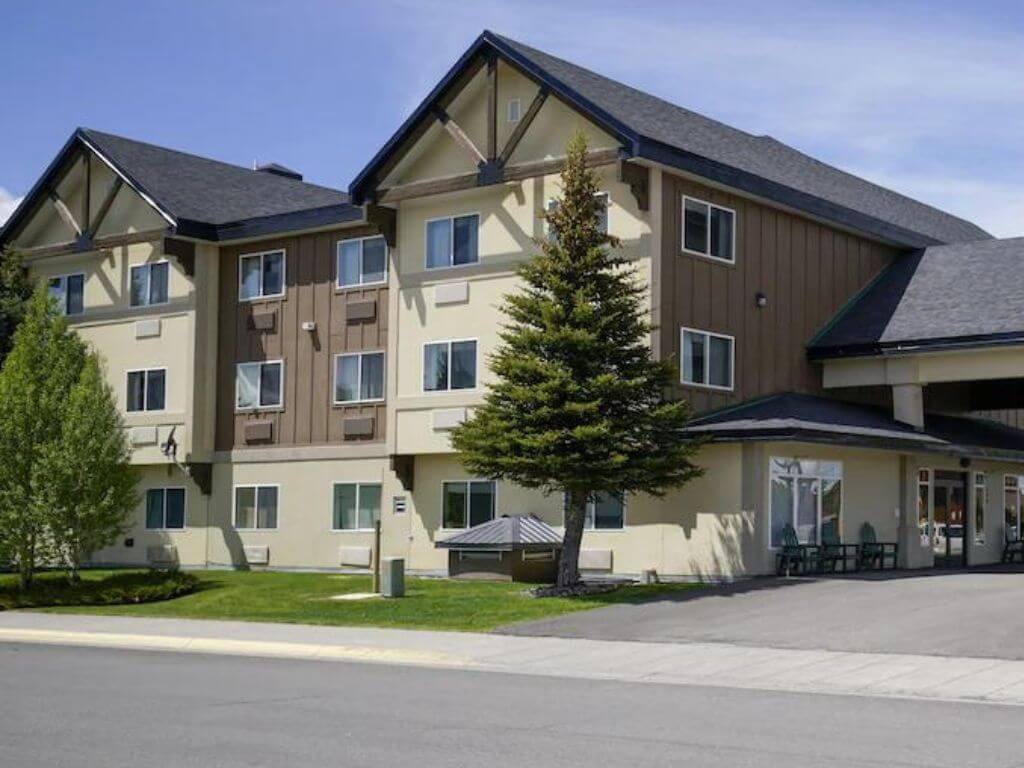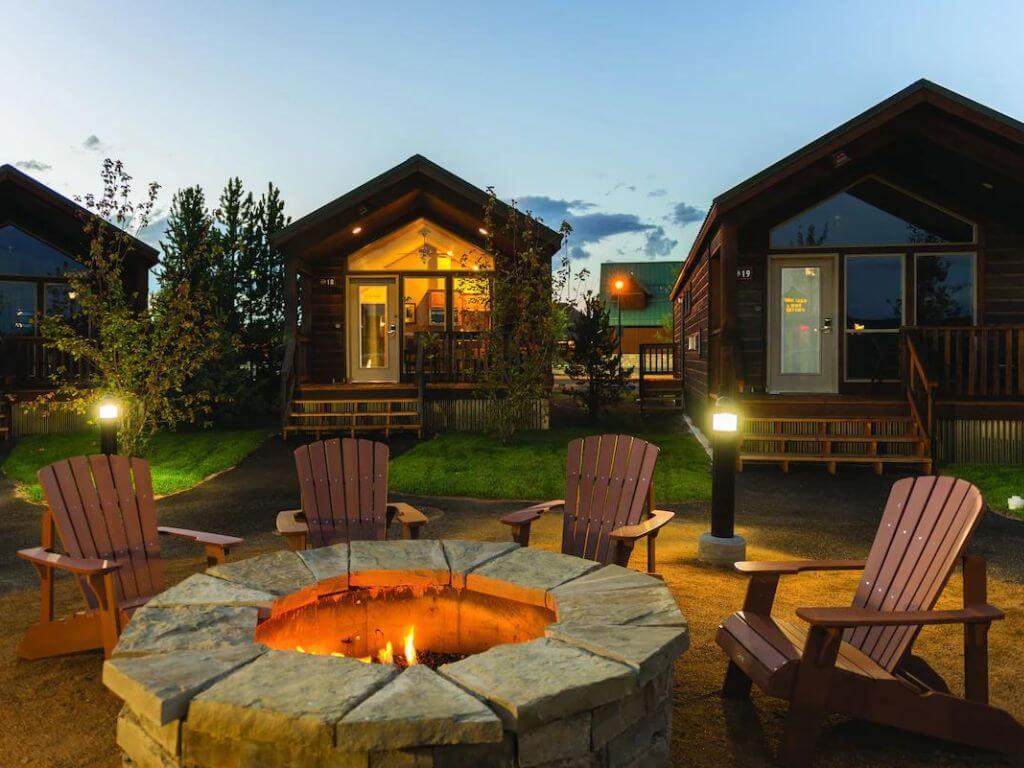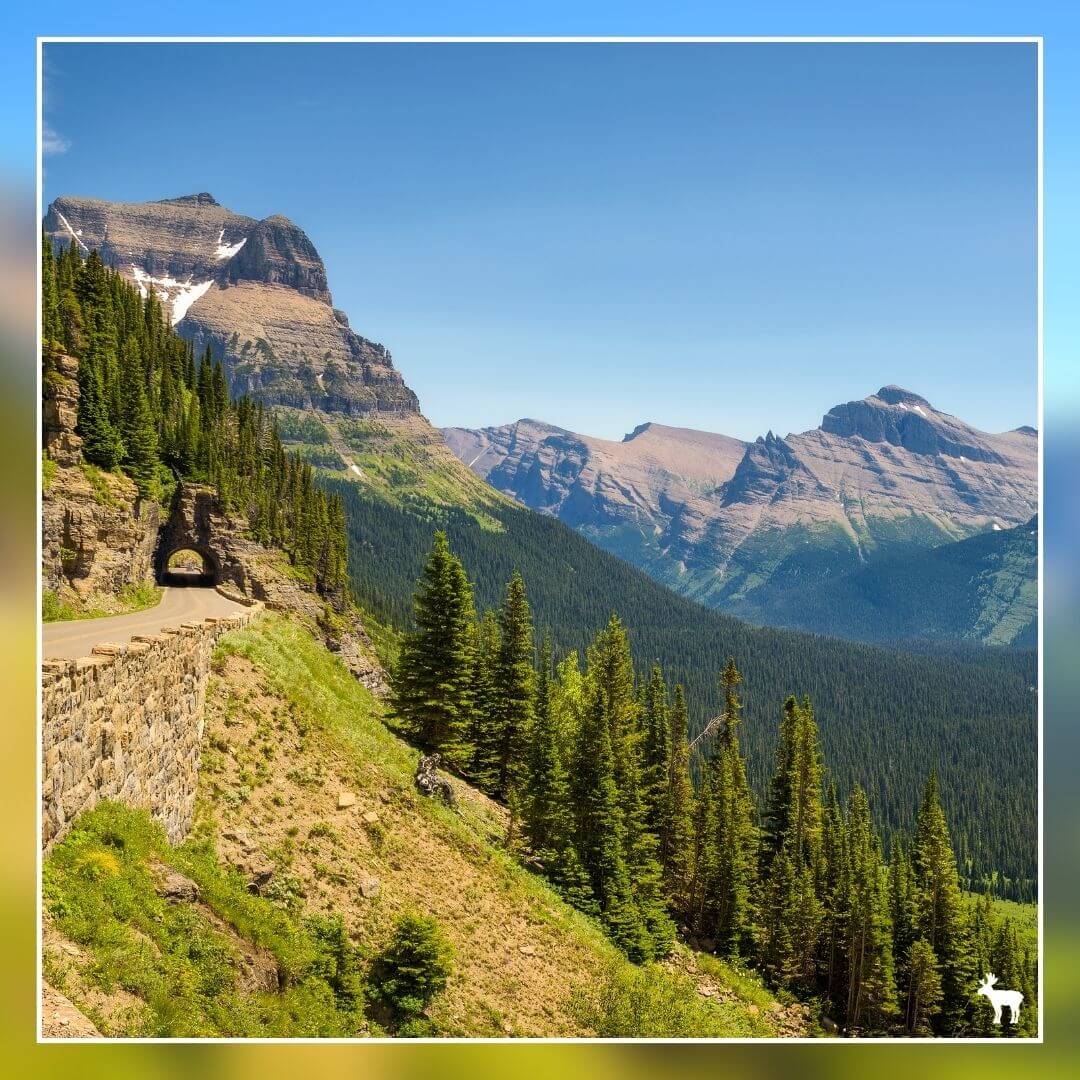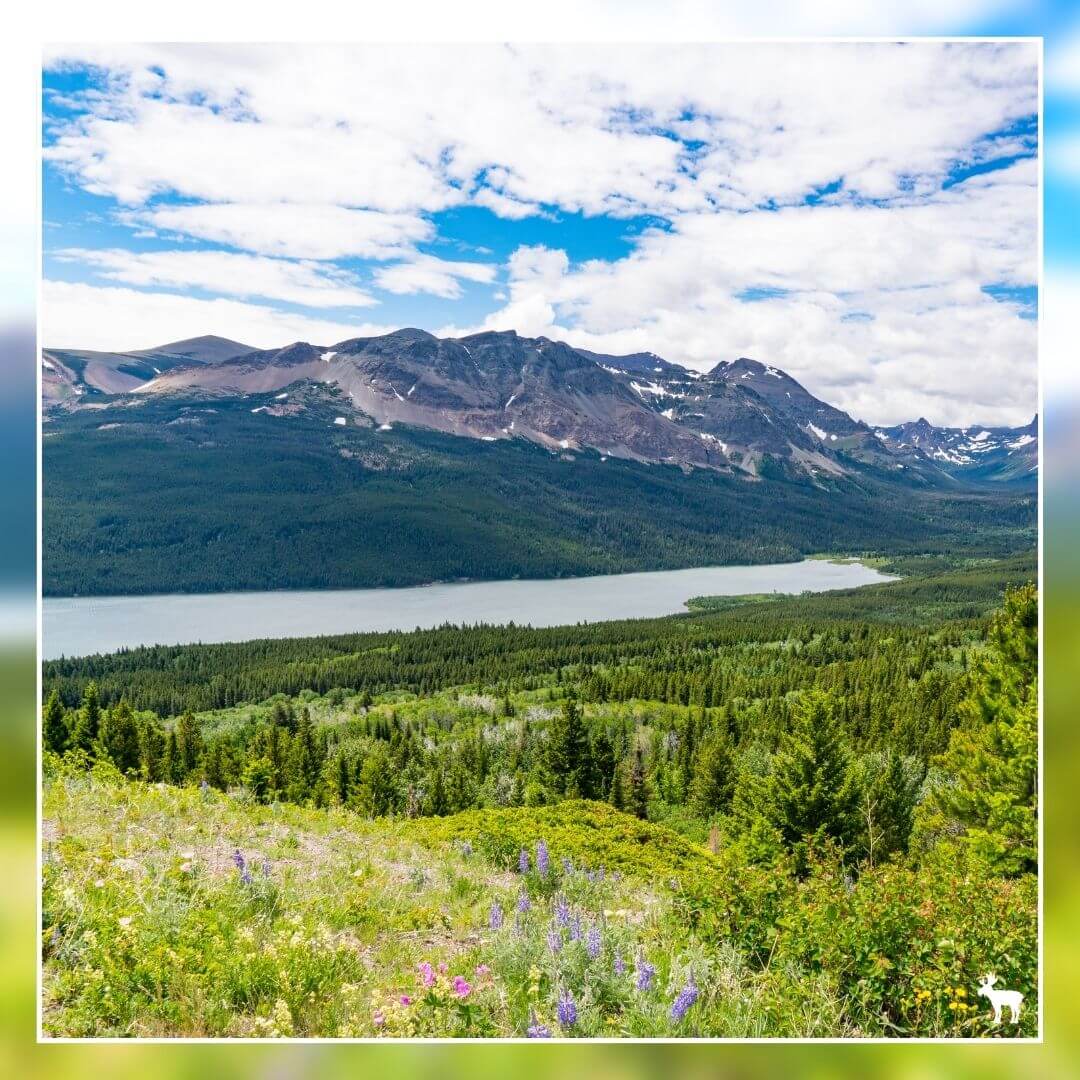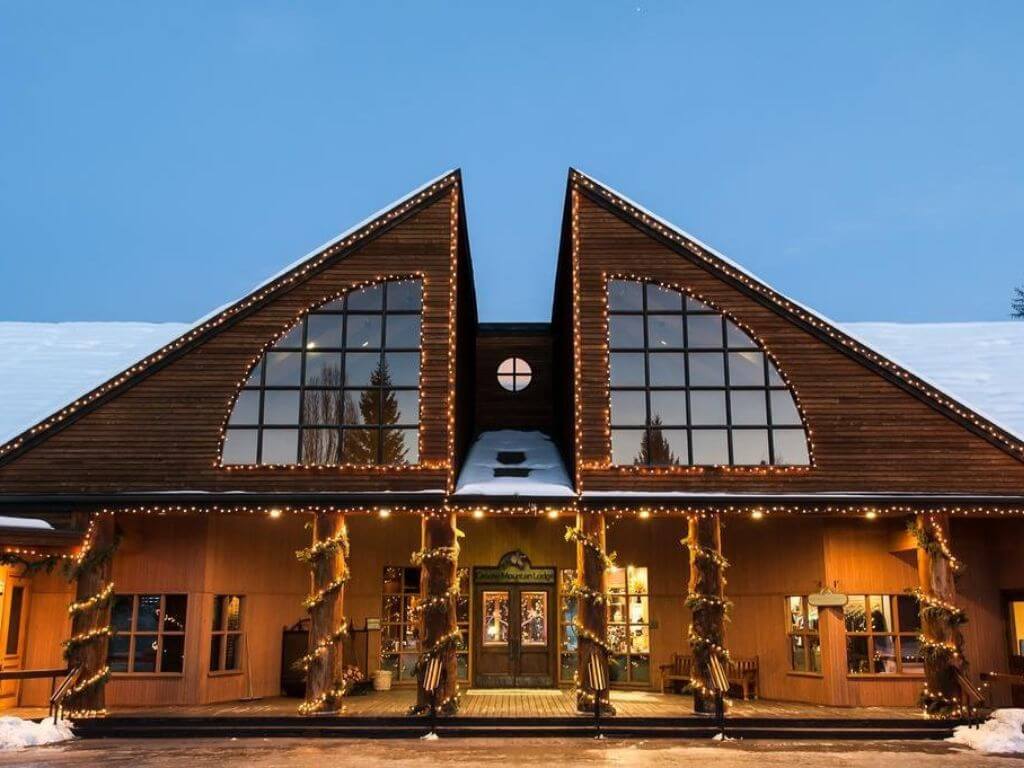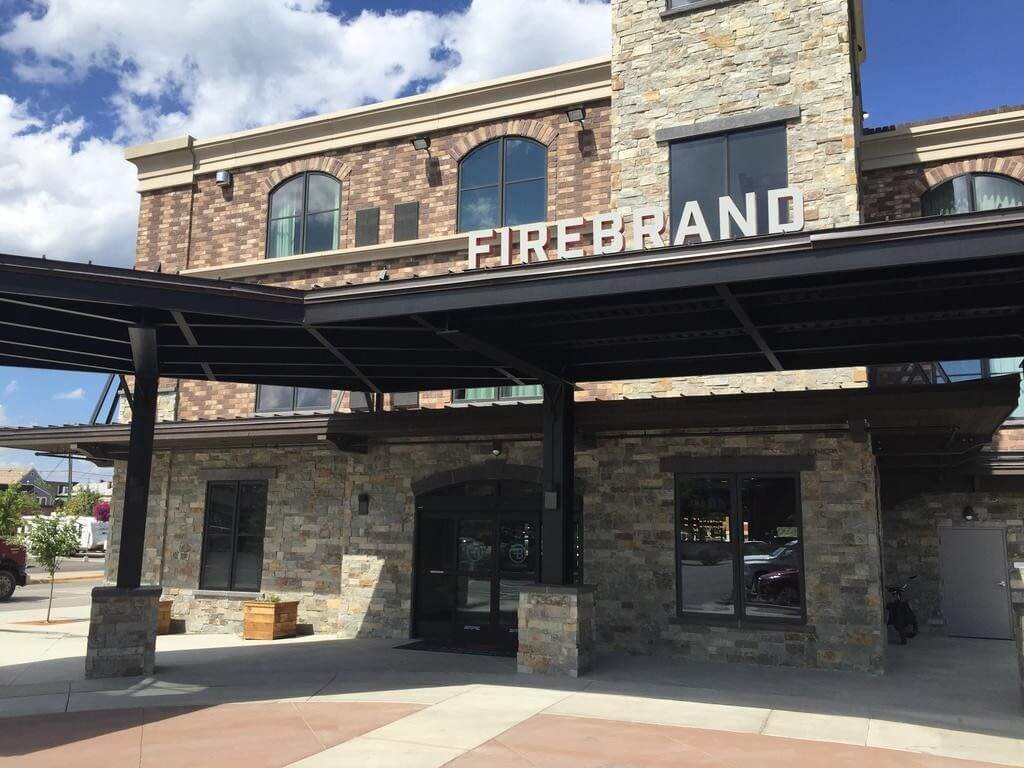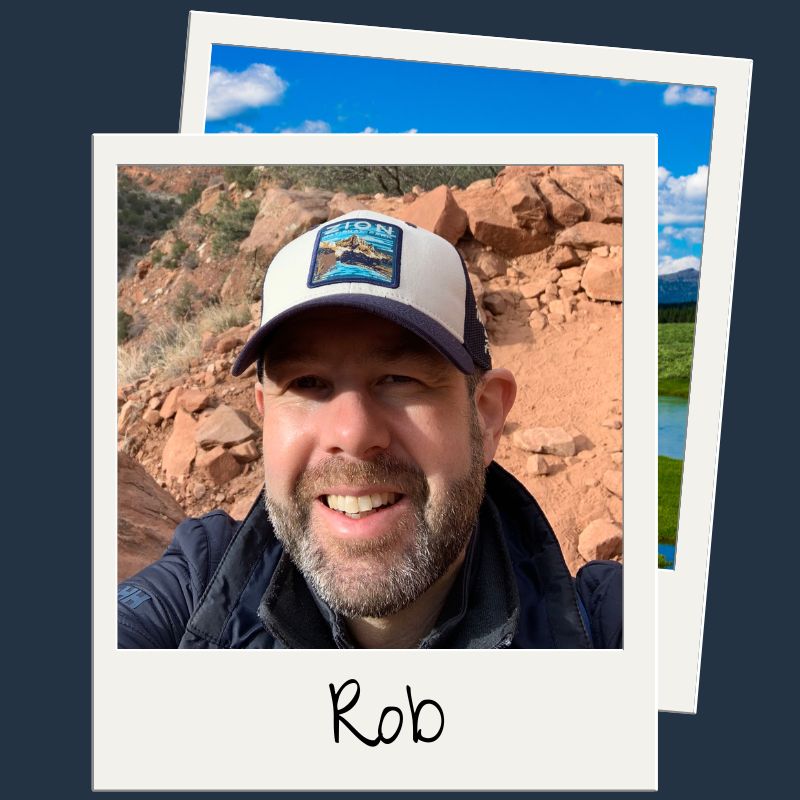This seven-day Geysers to Glaciers itinerary offers a comprehensive journey through Yellowstone, Grand Teton, and Glacier National Parks, covering all the major highlights of these three spectacular parks in just a week.
However, each park has so much more to discover. If you have more time, you can conveniently extend your stay, adding extra days to explore deeper into each park.
Use this itinerary as a starting point to plan your adventure, but feel free to tailor it to your own interests and pace. This guide is designed to help you begin your journey, but the true beauty of the trip lies in making it uniquely yours.
However, each park has so much more to discover. If you have more time, you can conveniently extend your stay, adding extra days to explore deeper into each park.
Use this itinerary as a starting point to plan your adventure, but feel free to tailor it to your own interests and pace. This guide is designed to help you begin your journey, but the true beauty of the trip lies in making it uniquely yours.
7-Day Yellowstone, Grand Teton & Glacier Itinerary At a Glance
Day 1: Arrive in Jackson Hole
On Day 1, you arrive in Jackson Hole, Wyoming, and start your trip. If you arrive early, head to Jackson Lake for kayaking or canoeing. The lake is surrounded by trees and mountains, making it a good place to relax after traveling.
Day 2: Grand Teton National Park
Day 2 is focused on exploring Grand Teton National Park, one of the most scenic areas in the United States, known for its natural beauty, wildlife, and hiking trails. Start your day early at Oxbow Bend to catch the sunrise, followed by a visit to the historic Mormon Row to see the iconic pioneer buildings.
Spend the afternoon at Jenny Lake, where you can hike to Inspiration Point or Hidden Falls, take a boat ride, or simply relax by the lake. The hikes offer breathtaking views of the Teton Range and surrounding areas.
Spend the afternoon at Jenny Lake, where you can hike to Inspiration Point or Hidden Falls, take a boat ride, or simply relax by the lake. The hikes offer breathtaking views of the Teton Range and surrounding areas.
Day 3: Yellowstone National Park
Visit the Upper Loop, including Mammoth Hot Springs' thermal formations, Norris Geyser Basin, and the Grand Canyon of the Yellowstone. Start at Lamar Valley for wildlife viewing, known as "America's Serengeti," and see Tower Fall and Petrified Tree at Tower Junction.
Day 4: Yellowstone National Park
Focus on specific attractions or revisit areas for more in-depth exploration, emphasizing early starts for wildlife and scenic points like Artist Point at the Grand Canyon for its views of Lower Falls.
Day 5: Drive from West Yellowstone to Whitefish
Today, you'll pass through Montana's diverse landscapes and small towns. Consider stopping at Virginia City or Nevada City to see historic ghost towns, or in Butte for lunch to enjoy Montana's small-town feel.
Day 6: Glacier National Park
Days 6-7 are set in Glacier National Park, renowned for its glacier-carved terrain, alpine meadows, and over 700 miles of trails. Start with the Going-to-the-Sun Road, a 50-mile drive offering stunning vistas, from West Glacier to St. Mary, peaking at Logan Pass. This drive, filled with scenic overlooks and trails, demands a day to fully experience its beauty.
Day 7: Glacier National Park
Dive deeper into the park’s wilderness. Hike the Iceberg Lake Trail, a 9.6-mile journey showcasing Glacier's raw beauty with breathtaking views. Alternatively, bike from Two Medicine Lake to East Glacier, a 12-mile route against a backdrop of steep mountains, offering a unique perspective of the park.
For a change of pace, take a gondola ride at Whitefish Mountain for summit trails surrounded by wildflowers and huckleberries, encapsulating the serene beauty of the region.
For a change of pace, take a gondola ride at Whitefish Mountain for summit trails surrounded by wildflowers and huckleberries, encapsulating the serene beauty of the region.
Can you do Glacier and Yellowstone in one trip?
Visiting Glacier and Yellowstone in one trip is definitely possible and can be a fantastic experience, but it requires thoughtful planning to make the most of your time in each park.
Can you do Grand Teton and Yellowstone together?
Visiting Grand Teton and Yellowstone in one trip is not only doable but also highly recommended. These two stunning national parks are located in close proximity to each other, making it relatively easy to experience both in a single trip.
How many days do you need in Glacier National Park?
For a thorough visit to Glacier National Park, allocate two days for the Going to the Sun Road, to cover the main sights and a longer hike. Add an extra day for a boat tour on St. Mary Lake or kayaking on Lake McDonald. If you're exploring beyond this area, including Many Glacier and Two Medicine, plan for at least three days.
How many days do you need in Yellowstone National Park?
If you have one day in Yellowstone National Park, start at Old Faithful, possibly staying overnight nearby for easy access. Visit Grand Prismatic Spring and its overlook. In the afternoon, check out Norris Geyser Basin or hike to Lonesome Geyser.
With two days, you can either explore the park's Lower and Upper Loops on separate days, covering major sights like Old Faithful, Yellowstone Lake, Norris, Mammoth Hot Springs, and the Grand Canyon of Yellowstone.
With two days, you can either explore the park's Lower and Upper Loops on separate days, covering major sights like Old Faithful, Yellowstone Lake, Norris, Mammoth Hot Springs, and the Grand Canyon of Yellowstone.
How many days do you need in Grand Teton National Park?
If you're short on time, a single day can give you a taste of the park. Focus on a scenic drive along Teton Park Road, take short hikes, and enjoy the views of the Teton Range. A must-visit is Jenny Lake, where you can take a short hike or a boat tour.
With two or three days, you can explore more thoroughly. This allows time for longer hikes, wildlife viewing, and activities like kayaking, horseback riding, or a rafting trip on the Snake River.
With two or three days, you can explore more thoroughly. This allows time for longer hikes, wildlife viewing, and activities like kayaking, horseback riding, or a rafting trip on the Snake River.
Adventure Without the Effort
Embark on a Group Guided Tour with Everything Included
If you prefer not to plan your own trip, consider joining an organized group tour, where expert guides lead you on excursions, and all accommodations are included for a hassle-free experience.
Day 1: Arrival at Jackson Hole, Wyoming
Welcome to the breathtaking landscapes of Wyoming!
Your adventure begins in Jackson Hole, the gateway to your Grand Teton itinerary.
If you arrive in Jackson Hole in the morning or early afternoon of your first day, consider taking a short drive to Jackson Lake for an unforgettable kayaking or canoeing experience.
The lake, surrounded by tree-lined peninsulas and mountain peaks, is the perfect place to spend your first few hours and an ideal way to unwind after your journey.
Your adventure begins in Jackson Hole, the gateway to your Grand Teton itinerary.
If you arrive in Jackson Hole in the morning or early afternoon of your first day, consider taking a short drive to Jackson Lake for an unforgettable kayaking or canoeing experience.
The lake, surrounded by tree-lined peninsulas and mountain peaks, is the perfect place to spend your first few hours and an ideal way to unwind after your journey.
Lodging suggestions near Grand Teton National Park
Day 2: Exploring Grand Teton National Park
Grand Teton National Park is among the most magnificent and striking destinations in the United States. Located predominantly in the Jackson Hole valley, this park boasts tranquil natural scenery, a wealth of wildlife, secluded waterfalls, and a vast array of hiking trails.
On your second day in Grand Teton National Park, with only one day to explore, it's a good idea to concentrate on the highlights. An early start at Oxbow Bend to catch the sunrise is a great way to begin.
Afterward, head to the historic Mormon Row, where you can explore the iconic pioneer buildings and soak in the area's rich history.
In the afternoon, spend time at Jenny Lake and take the hike to Inspiration Point or Hidden Falls.
Jenny Lake, at the foot of the Teton Range, is a popular destination within Grand Teton National Park. The lake offers views of Teewinot Mountain, Mount St. John, and Cascade Canyon from its east shore, and views of the Jackson Hole valley from the west shore. You can choose to hike, take a boat ride, or just relax by the lake. Each option provides a unique way to experience the beauty of this area.
The roundtrip hike to Hidden Falls from the visitor center is 5 miles (8 km) and to Inspiration Point is 6 miles (9.6 km). If using the Jenny Lake Boating shuttle boats (which charge a fee), the distances from the west boat dock are 1 mile (1.6 km) to Hidden Falls and 2 miles (3.2 km) to Inspiration Point.
This evening, we suggest embarking on the brief 2 1/2 hour drive to West Yellowstone. This will position you perfectly to make the most of your time in Yellowstone National Park tomorrow. The route from Teton Village to West Yellowstone is approximately 124 miles via US-20 E.
On your second day in Grand Teton National Park, with only one day to explore, it's a good idea to concentrate on the highlights. An early start at Oxbow Bend to catch the sunrise is a great way to begin.
Afterward, head to the historic Mormon Row, where you can explore the iconic pioneer buildings and soak in the area's rich history.
In the afternoon, spend time at Jenny Lake and take the hike to Inspiration Point or Hidden Falls.
Jenny Lake, at the foot of the Teton Range, is a popular destination within Grand Teton National Park. The lake offers views of Teewinot Mountain, Mount St. John, and Cascade Canyon from its east shore, and views of the Jackson Hole valley from the west shore. You can choose to hike, take a boat ride, or just relax by the lake. Each option provides a unique way to experience the beauty of this area.
The roundtrip hike to Hidden Falls from the visitor center is 5 miles (8 km) and to Inspiration Point is 6 miles (9.6 km). If using the Jenny Lake Boating shuttle boats (which charge a fee), the distances from the west boat dock are 1 mile (1.6 km) to Hidden Falls and 2 miles (3.2 km) to Inspiration Point.
This evening, we suggest embarking on the brief 2 1/2 hour drive to West Yellowstone. This will position you perfectly to make the most of your time in Yellowstone National Park tomorrow. The route from Teton Village to West Yellowstone is approximately 124 miles via US-20 E.
Grand Teton National Park Highlights
• Jenny Lake
• Mormon Row • Jackson Lake • Menors Ferry • Signal Mountain • Chapel of the Transfiguration • Snake River Overlook • Moose Wilson Road • Jackson Antler Arches • National Elk Refuge |
Activities in and around Grand Teton National Park• Horseback riding
• Hiking • Whitewater rafting • Mountain biking • Road cycling • Stand-Up Paddleboarding • Scenic highway drives • Ziplining • Via Ferrata • Ropes Course • Paragliding • Climbing • Wildlife safaris • Kayaking & canoeing |
Adventure Without the Effort
Embark on a Group Guided Tour with Everything Included
If you prefer not to plan your own trip, consider joining an organized group tour, where expert guides lead you on excursions, and all accommodations are included for a hassle-free experience.
Days 3 and 4: Exploring Yellowstone National Park
Spend the next two days in Yellowstone, the United States first national park, known for its rich history and natural wonders. The park's crown jewel, Old Faithful geyser, is among over 10,000 geothermal features, set in a dynamic mountain landscape.
Yellowstone is also a sanctuary for an array of wildlife, such as mountain goats, bighorn sheep, grizzly bears, wolves, and roaming herds of bison and elk, all thriving in its pristine environment of clean waters and unspoiled air.
Yellowstone is also a sanctuary for an array of wildlife, such as mountain goats, bighorn sheep, grizzly bears, wolves, and roaming herds of bison and elk, all thriving in its pristine environment of clean waters and unspoiled air.
All the main attractions in Yellowstone are located on or near the 142-mile Grand Loop Drive, which is shaped like a figure-8. For easier sightseeing, you can think of the park in two parts: the Upper Loop and the Lower Loop. This makes it simpler to plan your Yellowstone road trip itinerary and see the major sights.
Yellowstone Upper Loop: Allocate a day to explore the Upper Loop, including Mammoth Hot Springs, walk the Porcelain Basin Trail at Norris Geyser Basin, and see the impressive Grand Canyon of the Yellowstone.
Lamar Valley: The best time to visit Lamar Valley is at sunrise for optimal wildlife viewing. Make it your first stop and then explore the attractions at Tower Junction, including Tower Fall and Petrified Tree. Often referred to as "America's Serengeti" due to its abundant water, greenery, and open views, it's a great place to spot a variety of wildlife. You might see bison, pronghorn, or deer herds; catch sight of bald eagles and osprey; or even spot a badger, coyote, or grizzly bear.
Mammoth Hot Springs offers a unique landscape with over 50 geothermal features, accessible via two boardwalks. Here, you can see formations like Liberty Cap, Minerva and Palette Springs, and Angel Terrace. Close to the springs, history enthusiasts can quickly visit Fort Yellowstone.
The Grand Canyon of the Yellowstone is a large, deep canyon that's best seen by walking. There are 10 lookout spots, and Artist Point is very popular. You can see the impressive Lower Falls from here. For more views, you can walk along the south rim of the canyon to Point Sublime.
Yellowstone Upper Loop: Allocate a day to explore the Upper Loop, including Mammoth Hot Springs, walk the Porcelain Basin Trail at Norris Geyser Basin, and see the impressive Grand Canyon of the Yellowstone.
Lamar Valley: The best time to visit Lamar Valley is at sunrise for optimal wildlife viewing. Make it your first stop and then explore the attractions at Tower Junction, including Tower Fall and Petrified Tree. Often referred to as "America's Serengeti" due to its abundant water, greenery, and open views, it's a great place to spot a variety of wildlife. You might see bison, pronghorn, or deer herds; catch sight of bald eagles and osprey; or even spot a badger, coyote, or grizzly bear.
Mammoth Hot Springs offers a unique landscape with over 50 geothermal features, accessible via two boardwalks. Here, you can see formations like Liberty Cap, Minerva and Palette Springs, and Angel Terrace. Close to the springs, history enthusiasts can quickly visit Fort Yellowstone.
The Grand Canyon of the Yellowstone is a large, deep canyon that's best seen by walking. There are 10 lookout spots, and Artist Point is very popular. You can see the impressive Lower Falls from here. For more views, you can walk along the south rim of the canyon to Point Sublime.
Lodging suggestions near Yellowstone National Park
Upper Loop Highlights
|
• Mammoth Hot Springs
• Golden Gate • Apollonaris Spring • Obsidian Cliff • Frying Pan Spring • Museum of the National Park Ranger • Roaring Mountain Fumaroles • Norris Geyser Basin with Steamboat Geyser and Porcelain Basin • Grand Canyon of the Yellowstone |
• Upper & Lower Yellowstone Falls
• Uncle Tom's Trail • Artist Point • Dunraven Pass • Mt Washburn • Tower Fall • Calcite Springs Viewpoint • Lamar Valley • Petrified Tree • Undine Falls |
Yellowstone Lower Loop: Dedicate a full day to exploring the lower portion of Yellowstone National Park, where some of the park's most iconic sights are located.
Visit Old Faithful, the most famous geyser in the park, known for erupting regularly. Seeing Old Faithful erupt is a must-see attraction that shows the amazing power of nature.
Head to the Grand Prismatic Spring, renowned for its stunning, vivid colors and enormous size, making it one of the most photographed geothermal features in the park.
Also, visit the Lower Geyser Basin, which has lots of geothermal features like geysers, hot springs, and fumaroles. This area shows the different geothermal activities happening under Yellowstone and is a great place to see the park's famous geothermal landscape.
This afternoon, head south to see Yellowstone Lake up close. It's the largest high-elevation lake in North America and very deep, so it's too cold for swimming but great for kayaking or canoeing.
The lake has many underwater geysers and geothermal features, so it's a good idea to take a guided tour from a local outfitter to safely explore these unique spots.
Visit Old Faithful, the most famous geyser in the park, known for erupting regularly. Seeing Old Faithful erupt is a must-see attraction that shows the amazing power of nature.
Head to the Grand Prismatic Spring, renowned for its stunning, vivid colors and enormous size, making it one of the most photographed geothermal features in the park.
Also, visit the Lower Geyser Basin, which has lots of geothermal features like geysers, hot springs, and fumaroles. This area shows the different geothermal activities happening under Yellowstone and is a great place to see the park's famous geothermal landscape.
This afternoon, head south to see Yellowstone Lake up close. It's the largest high-elevation lake in North America and very deep, so it's too cold for swimming but great for kayaking or canoeing.
The lake has many underwater geysers and geothermal features, so it's a good idea to take a guided tour from a local outfitter to safely explore these unique spots.
Lower Loop Highlights
|
• Gibbon Falls
• Beryl Spring • Artist Paintpots • Fountain Paintpots • Lower Geyser Basin • Firehole Lake Drive with White Dome • Midway Geyser Basin with Grand Pristmatic Spring |
• Sapphire Pool
• Upper Geyser Basin with Old Faithful • Kepler Cascades • West Thumb • Geyser Basin • Hayden Valley • Mud Volcano & Sulphur Cauldro |
Adventure Without the Effort
Embark on a Group Guided Tour with Everything Included
If you prefer not to plan your own trip, consider joining an organized group tour, where expert guides lead you on excursions, and all accommodations are included for a hassle-free experience.
Day 5: From Virginia City & Nevada City to Butte, Montana, and finally Whitefish
Your drive for the day is from West Yellowstone to Whitefish, which will take about 6 hours and 30 minutes, covering a distance of 386 miles along US-287 N.
Today's travel day includes several opportunities for quick stops to break up the journey.
As you journey across Montana, you'll traverse a diverse array of landscapes and small towns.
Consider a quick stop at Virginia City or Nevada City, two well-preserved ghost towns along Montana Highway 287. These towns give a feel of the Old West.
Another option is Butte, located between Yellowstone and Glacier National Parks. It's a small town with a mix of charm and a bit of a city feel. Stopping here for lunch can be a nice way to experience Montana's unique small-town culture.
Today's travel day includes several opportunities for quick stops to break up the journey.
As you journey across Montana, you'll traverse a diverse array of landscapes and small towns.
Consider a quick stop at Virginia City or Nevada City, two well-preserved ghost towns along Montana Highway 287. These towns give a feel of the Old West.
Another option is Butte, located between Yellowstone and Glacier National Parks. It's a small town with a mix of charm and a bit of a city feel. Stopping here for lunch can be a nice way to experience Montana's unique small-town culture.
Days 6-7: Glacier National Park
Days 6-7 are dedicated to Glacier National Park, a true American treasure featuring some of the most spectacular vistas in the Rocky Mountains.
Glacier National Park park is a landscape sculpted by glaciers, dotted with sparkling blue lakes and expansive alpine scenery. With over 700 miles of stunning trails, it stands as one of the most awe-inspiring national parks in the United States.
A journey along the iconic Going-to-the-Sun Road takes you to the Continental Divide, offering breathtaking views. For a more immersive experience, you can choose from nearly 1,200 kilometers of hiking trails, each revealing the majesty of the park in its own unique way.
Glacier National Park park is a landscape sculpted by glaciers, dotted with sparkling blue lakes and expansive alpine scenery. With over 700 miles of stunning trails, it stands as one of the most awe-inspiring national parks in the United States.
A journey along the iconic Going-to-the-Sun Road takes you to the Continental Divide, offering breathtaking views. For a more immersive experience, you can choose from nearly 1,200 kilometers of hiking trails, each revealing the majesty of the park in its own unique way.
Spend your first day in Glacier National Park exploring the iconic Going to the Sun Road.
This 50-mile journey, though seemingly short in distance, will likely take up most of your day as you immerse yourself in the stunning mountain views, meadows filled with alpine flowers, and cascading waterfalls.
The road stretches from West Glacier to St. Mary on the park's east side, reaching its apex at the Continental Divide at Logan Pass. Renowned as the most picturesque drive in the park, it's also often considered as one of the most beautiful routes in the entire United States.
Along the route, you’ll encounter numerous pull-outs, scenic overlooks, and trails. It’s important to be well-prepared for the drive to fully appreciate and explore the numerous sights along the way.
On your second day at Glacier National Park, you can truly immerse yourself in its natural beauty by exploring on foot, by bike, or on the water.
Iceberg Lake Hike, a 9.6-mile round trip with an elevation gain of 1,200 feet. This trail is often referred to as the "Crown Jewel" of Glacier's hiking routes with stunning panoramic views that capture the essence of the park’s rugged beauty.
For a different pace, embark on a bike ride from Two Medicine Lake to East Glacier. This 12-mile journey is flanked by steep mountains that provide a majestic backdrop for your adventure. It’s an excellent way to experience the park’s varied landscapes and get a sense of its grand scale.
Finally, consider hiking at Whitefish Mountain. Begin with a scenic gondola ride, enjoying the breathtaking views on your way up. Once at the summit, explore the mountaintop trails, which are adorned with wildflowers and wild huckleberries, offering a serene and picturesque setting.
Lodging suggestions near Glacier National Park
Glacier National Park Highlights
• West Glacier
• Apgar • Lake McDonald Lodge • The Loop • Weeping Wall • Triple Arches • Oberlin Bend • Logan Pass • Tunnels • Big Bend • Wild Goose Island • Lunch Creek • Haystack Falls • Big Bend • Bird Woman Falls • Siyeh Bend • St Mary |
Activities in and around Glacier National Park• Horseback riding
• Hiking • Whitewater rafting • Stand up paddle boarding • Kayaking & canoeing • Boat tours • Mountain biking • Road cycling • Rock climbing • Scenic highway drives • Scenic air flights • Ziplining |
Adventure Without the Effort
Embark on a Group Guided Tour with Everything Included
If you prefer not to plan your own trip, consider joining an organized group tour, where expert guides lead you on excursions, and all accommodations are included for a hassle-free experience.
Field Notes & Mooseful Information
How to get to Yellowstone National Park
Yellowstone National Park, primarily located in Wyoming's northwestern corner with small parts in Montana and Idaho, is accessible through five entrances: north, northeast, east, south, and west. Except for the north entrance, all others are closed to vehicles in winter.
The nearest major city to Yellowstone is Bozeman, Montana, approximately a 90-minute drive to the park's north entrance. West Yellowstone, Montana, located just outside the west entrance, and towns like Cooke City, Gardner in Montana, and Cody in Wyoming, serve as convenient bases for visiting the park.
Yellowstone Airport (WYS) in West Yellowstone, Montana, is the closest airport to Yellowstone National Park, just three miles (4.8 kilometers) from the park's West Entrance.
The Bozeman Yellowstone International Airport (BZN) is the closest international airport to Yellowstone National Park. It's slightly over an hour's drive to the North Entrance near Gardiner, Montana, and under two hours to the West Entrance in West Yellowstone, Montana.
The nearest major city to Yellowstone is Bozeman, Montana, approximately a 90-minute drive to the park's north entrance. West Yellowstone, Montana, located just outside the west entrance, and towns like Cooke City, Gardner in Montana, and Cody in Wyoming, serve as convenient bases for visiting the park.
Yellowstone Airport (WYS) in West Yellowstone, Montana, is the closest airport to Yellowstone National Park, just three miles (4.8 kilometers) from the park's West Entrance.
The Bozeman Yellowstone International Airport (BZN) is the closest international airport to Yellowstone National Park. It's slightly over an hour's drive to the North Entrance near Gardiner, Montana, and under two hours to the West Entrance in West Yellowstone, Montana.
How to get to Grand Teton National Park
Grand Teton National Park is located just north of Jackson, Wyoming and just south of the south entrance to Yellowstone National Park. Grand Teton has four separate entrances and several have limited vehicle access November through May.
Jackson Hole Airport (JAC) in Jackson, Wyoming, sits right at the foothills of the Teton Mountain Range, inside Grand Teton National Park. The Town of Jackson is a mere 20-minute drive away. Alternatively, some travelers choose to fly into Idaho Falls, Idaho, located 93 miles (150 kilometers) away, or Salt Lake City, Utah, at a distance of 280 miles (451 kilometers).
Jackson Hole Airport (JAC) in Jackson, Wyoming, sits right at the foothills of the Teton Mountain Range, inside Grand Teton National Park. The Town of Jackson is a mere 20-minute drive away. Alternatively, some travelers choose to fly into Idaho Falls, Idaho, located 93 miles (150 kilometers) away, or Salt Lake City, Utah, at a distance of 280 miles (451 kilometers).
Getting around Glacier National Park
In Glacier National Park, the Going to the Sun Road shuttle system operates from July 1 or when the road opens (if delayed by snowpack) until Labor Day. The fare-free shuttle, running between the Apgar and St. Mary Visitor Centers to Logan Pass, operates on a first-come, first-served basis without reservations.
Private vehicles longer than 21 feet or wider than 8 feet are restricted on certain sections of the road, so larger vehicles like RVs often park and use the shuttle.
Bicycles are allowed on all park roads, but there are restrictions on the Going to the Sun Road from June 15 through Labor Day, particularly in busy sections and times for safety reasons.
Private vehicles longer than 21 feet or wider than 8 feet are restricted on certain sections of the road, so larger vehicles like RVs often park and use the shuttle.
Bicycles are allowed on all park roads, but there are restrictions on the Going to the Sun Road from June 15 through Labor Day, particularly in busy sections and times for safety reasons.
Getting around Yellowstone and Grand Teton National Park
Most visitors to Yellowstone and Grand Teton National Parks use personal vehicles or a rental car for transportation, as Yellowstone has no public transit system. Grand Teton National Park has only a limited public transportation system. You can rent cars at major airports in the Yellowstone/Teton vicinity.
More places to stay near Yellowstone National Park
Accommodation options within Yellowstone National Park include hotels, rustic cabins, and luxury suites. It's essential to book these well in advance, as they often sell out quickly. Reservations typically open on May 1 for the following summer, and it's common for them to be fully booked over a year ahead.
Campgrounds and RV parks are available. To secure a spot at the first-come, first-served campgrounds, especially during peak summer months, arriving early in the morning is advised. Note that many campgrounds in the park have restrictions on RV length.
Choosing to stay outside the park offers a broader range of accommodations and budget options.
West Yellowstone (14 miles from Grand Loop Drive): This is the largest community near the park and closest to key attractions like Midway Geyser Basin and Old Faithful. The town is popular due to its variety of lodgings and restaurants.
Gardiner (5 miles from Grand Loop Drive): Entering Yellowstone from Gardiner is a unique experience, passing under the stately Roosevelt Arch. Nearby attractions include Mammoth Hot Springs and local elk herds.
Cody (26 miles from Fishing Bridge): For a taste of the Old West, historic Cody is the place to be. It offers summer rodeos, the Buffalo Bill Center of the West, and western music venues, perfect for those looking to add some cowboy flair to their Yellowstone adventure.
Campgrounds and RV parks are available. To secure a spot at the first-come, first-served campgrounds, especially during peak summer months, arriving early in the morning is advised. Note that many campgrounds in the park have restrictions on RV length.
Choosing to stay outside the park offers a broader range of accommodations and budget options.
West Yellowstone (14 miles from Grand Loop Drive): This is the largest community near the park and closest to key attractions like Midway Geyser Basin and Old Faithful. The town is popular due to its variety of lodgings and restaurants.
Gardiner (5 miles from Grand Loop Drive): Entering Yellowstone from Gardiner is a unique experience, passing under the stately Roosevelt Arch. Nearby attractions include Mammoth Hot Springs and local elk herds.
Cody (26 miles from Fishing Bridge): For a taste of the Old West, historic Cody is the place to be. It offers summer rodeos, the Buffalo Bill Center of the West, and western music venues, perfect for those looking to add some cowboy flair to their Yellowstone adventure.
Search for more places to stay near Yellowstone National Park
More places to stay near Glacier National Park
Glacier National Park provides a range of historic accommodation options, including Lake McDonald Lodge, Glacier Park Lodge, and Many Glacier Hotel.
For a more motel-style stay, consider Swiftcurrent Motor Inn and Rising Sun Motor Inn. The Village Inn at Apgar also provides full kitchen units along with standard motel rooms.
In nearby towns like Whitefish, Kalispell, and Columbia Falls, there's a wider selection of places to stay. These include standard hotel rooms, resort-style accommodations, rustic cabins, and lakeside cottages.
Outside the park, several campgrounds and RV parks are available. West Glacier RV Park and Cabins, St. Mary KOA Holiday, and Glacier Peaks RV Park and Campground are some options.
For a more motel-style stay, consider Swiftcurrent Motor Inn and Rising Sun Motor Inn. The Village Inn at Apgar also provides full kitchen units along with standard motel rooms.
In nearby towns like Whitefish, Kalispell, and Columbia Falls, there's a wider selection of places to stay. These include standard hotel rooms, resort-style accommodations, rustic cabins, and lakeside cottages.
Outside the park, several campgrounds and RV parks are available. West Glacier RV Park and Cabins, St. Mary KOA Holiday, and Glacier Peaks RV Park and Campground are some options.
Search for more places to stay near Glacier National Park
More places to stay near Grand Teton National Park
In Grand Teton National Park, accommodation options include hotel rooms, cabins, hostel bunk rooms, and camping sites. Popular lodges like Jackson Lake Lodge and Jenny Lake Lodge are on the pricier side and often booked a year in advance.
The park has six campgrounds, all requiring reservations made up to six months in advance. Some campgrounds offer showers, RV hookups, and cabins.
Outside the park, in Jackson, Wyoming, there are many hotels, resorts, vacation rentals, and private campgrounds often making these the best place to stay.
Additionally, there are campgrounds in the adjacent Bridger-Teton National Forest.
The park has six campgrounds, all requiring reservations made up to six months in advance. Some campgrounds offer showers, RV hookups, and cabins.
Outside the park, in Jackson, Wyoming, there are many hotels, resorts, vacation rentals, and private campgrounds often making these the best place to stay.
Additionally, there are campgrounds in the adjacent Bridger-Teton National Forest.
Search for more places to stay near Grand Teton National Park
|
Rob is an experienced independent travel consultant and travel content creator.
His love for travel started as a child, playing travel agent with his grandparents using holiday brochures from the local travel agency. Fast forward over 40 years, and Rob has turned this passion into a career, dedicating his time to helping others plan their dream vacations. He says his happy place is in a cozy cabin by a lake in Oregon, sitting at the bar of a honky-tonk on Broadway in Nashville, or closer to home walking and cycling in the Peak District National Park. |

